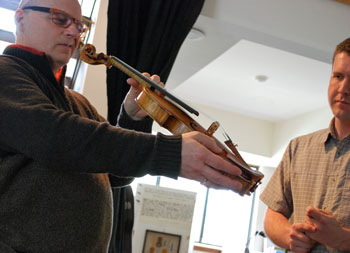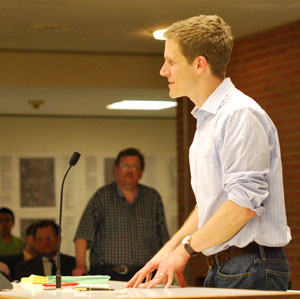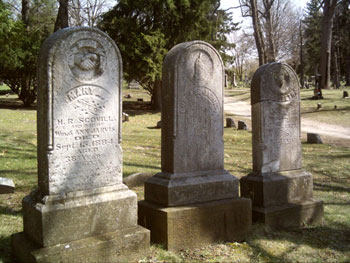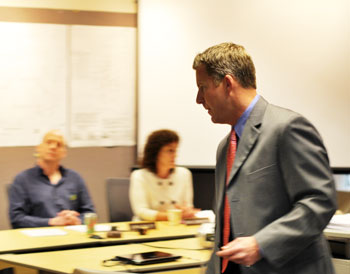Greenbelt, Park Commissions Strategize
Though they share oversight for portions of the same millage, the city’s park and greenbelt advisory commissions had never officially met – until last week.
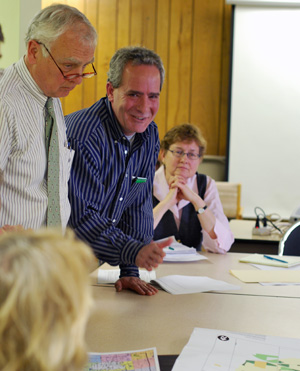
Scott Rosencrans, center, is chair of the city's park advisory commission, but will be stepping down from PAC when his term ends this month. At Rosencrans' right is developer Peter Allen, a member of the greenbelt advisory commission. In the background is Peg Kohring of The Conservation Fund, which manages the land acquisition millage for the parks and greenbelt.
As members arrived at the Ann Arbor Senior Center, where their joint meeting was held on April 6, some knew each other, but many others needed to introduce themselves. Among them were an attorney, a farmer, an ecologist, a teacher, a carpenter, a developer, a research scientist, a landscape architect – and many avid users of the local parks.
Scott Rosencrans, chair of the park advisory commission, told the group he thought it was important to strengthen communication between the two commissions, given the overlap in their strategic goals. And even though he’s stepping down from PAC when his term ends later this month, “hopefully you’ll pursue that,” he said.
At last week’s meeting, commission members got overviews of the parks and greenbelt programs from staff of The Conservation Fund, which manages the greenbelt and parks acquisition programs. In some ways, the meeting was a mini-tutorial for each group on the activities of the other, and an informal discussion about some ways to partner in the future.
There was also some frustration about what they couldn’t discuss. Typically, PAC’s land acquisition committee – a committee of the entire PAC membership – and the greenbelt commission spend much of their meetings in closed sessions, to discuss negotiations with landowners. But because each group needed a six-member quorum required by the Open Meetings Act to enter a joint closed session – and only five members of GAC attended – all of the meeting remained public. There was one property in particular that some commissioners and staff wanted to discuss in private, but couldn’t. About their inability to undertake that discussion, Peg Kohring of The Conservation Fund said, “It’s killing me!” [Full Story]





